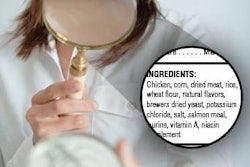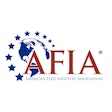The concept of using diet in the management of disease in dogs and cats can be traced back to the 1940s, when Mark Morris Sr., DVM, first marketed a restricted protein product for the feeding of dogs with chronic kidney disease. Since that time, therapeutic petfoods (also known as veterinary medical foods) have shown themselves to be a vital component of the veterinary practitioner’s arsenal for managing a number of medical conditions.
Marketing of this type of product presents unique challenges from a regulatory perspective, as the products blur the distinction between “food” and “drug” as defined by the US Federal Food, Drug and Cosmetic Act. While the Food and Drug Administration has had informal policies regarding the marketing of therapeutic petfoods for decades, for the first time the agency has proposed formal guidance on the matter. On September 10, 2012, the FDA announced the availability of a draft compliance policy guide entitled “Labeling and Marketing of Nutritional Products Intended for Use to Diagnose, Cure, Mitigate, Treat or Prevent Disease in Dogs and Cats.”
The FDA considers these products to meet the statutory definition of drugs, and as such, they are subject to enforcement action as adulterated drugs because they have not been approved via new animal drug applications as required by law. However, in establishing regulatory priorities to address its most pressing concerns about these types of products, the FDA has stated it would be least likely to initiate or recommend enforcement action against a therapeutic diet if all the following conditions were met:
- The product is made available to the public only through licensed veterinarians or through retail or internet sales to individuals purchasing the product under the direction of a veterinarian;
- The product is not marketed as an alternative to approved new animal drugs;
- The manufacturer’s facility is registered under the Bioterrorism Act;
- The product’s labeling complies with all pertinent FDA labeling regulations for animal feed;
- The product’s label does not bear expressed or implied disease claims;
- Distribution of labeling and promotional materials with any disease claims for the product is limited so it is provided only to veterinary professionals;
- Electronic resources for the dissemination of labeling information and promotional materials are secured so they are available only to veterinary professionals;
- The product contains only ingredients that are generally recognized as safe (GRAS), approved food additives or feed ingredients defined in the 2012 Official Publication of the Association of American Feed Control Officials; and
- The label and labeling of the product is not false and misleading in other respects, including the presence of therapeutic claims that are not scientifically substantiated.
Most of these conditions of the FDA’s exercise of enforcement discretion are not new to the agency. In 1999, the FDA laid out its rationale for restricting claims relating to the intended effect of the product on disease to veterinary literature and not allowing such claims on labels and other materials intended for consumers (see “Resources”). Simply, the FDA acknowledged that the veterinarian requires information on the diet/disease relationship to understand and properly dispense the product, while the same information in the pet owner’s hands without veterinary oversight could lead to misdiagnosis and inappropriate use. The FDA also explained its reasoning for requiring these products be dispensed only under a valid veterinarian/client/patient relationship in a 2003 news article in the Journal of the American Veterinary Medical Association.
One component that is overtly lacking in the conditions for enforcement discretion is any requirement for pre-market review of data to demonstrate safety and utility for the product’s intended purpose in management of disease. Historically, the FDA simply has not had the resources to implement this sort of oversight. Rather, it has relied on the dispensing veterinarian’s training and scientific knowledge to evaluate the available scientific information and assess the usefulness of the product. There have been discussions outside of the FDA about establishing a third-party review system to evaluate the therapeutic diet company’s supportive data, but no progress has been made on that possibility in recent years.
In its notice of the availability of the draft compliance policy guide, the FDA has noted the decline in adherence to its informal policies over the years. Assuming this guide is put in place, it will allow for better understanding of the requirements by manufacturers and more uniform enforcement by FDA inspectors and state regulators. In the interim, the document is open for public comment until November 9, 2012. Send electronic comments to www.regulations.gov, re: Docket No. FDA–2012–D–0755.


















